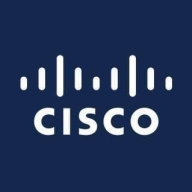

Find out what your peers are saying about Wazuh, Splunk, Datadog and others in Log Management.
I have seen a return on investment with Check Point Security Management, as my security concerns regarding data production have been greatly diminished, and my time is also saved.
I have seen a strong ROI from using Check Point Security Management through unified policy management, reduced misconfigurations, and faster incident response.
The time to resolve issues is very much better now with Check Point Security Management.
There are a lot of solutions which can provide the same features.
We have partner support that helps us mitigate vulnerabilities reported by our infrastructure team.
The challenge was with drivers due to the size, and we had not provisioned the partition to the right size.
The customer support for Check Point Security Management is great.
So far, it has been functioning smoothly without any issues in the past 1.5 years.
When you upgrade multiple times, you leave many files that are useless. They are dated, so it's always better to create a new machine every few versions, for example, three or four major versions.
Regarding scalability, I have given the rating of nine out of ten.
I would rate scalability capabilities as ten out of ten.
Check Point Security Management is really stable, and I have not experienced any downtime or issues with reliability except for when we do upgrades.
The SmartConsole used to administrate the security management is somewhat unstable.
In my environment, Check Point Security Management is stable, as I do not see any downtime.
As an IT person, I occasionally need to check how much internet bandwidth has been used in the internal network over the past month, day, or week.
I believe they can improve the management by allowing better API functionality because the API now is a little complicated, making it difficult to do automation.
Additionally, it crashes pretty regularly, so they could resolve the stability issues as well.
I remember version 6.4 had an integration with Eddie, allowing me to define a policy according to my users, however, the latest version, lacks this integration.
Since we are using it extensively, we get significant discounts during procurement.
My experience with pricing, setup costs, and licensing for Check Point Security Management involves a bit of a challenge in pricing, as it is somewhat costlier than previous devices.
Licensing is quite expensive.
Check Point Security Management does not operate like that; it shows the mobile device, tablet, smartphone, laptop, and desktop separately so that I can easily find out how many desktops are connected, how many mobile devices are connected, and I can easily block mobile devices and free up the IPs.
Check Point Security Management has positively impacted my organization by providing centralized control, allowing us to manage all security policies and gateways from a single console, reducing complexity and saving time.
We can't work without Check Point because it provides the real visibility needed to manage the environment.
It provides full visibility of my devices, whether I have six or ten devices.
| Product | Market Share (%) |
|---|---|
| Check Point Security Management | 0.4% |
| Wazuh | 13.2% |
| Grafana Loki | 8.4% |
| Other | 78.0% |
| Product | Market Share (%) |
|---|---|
| Cisco Secure Firewall Management Center | 1.3% |
| Tufin Orchestration Suite | 22.8% |
| AlgoSec | 22.6% |
| Other | 53.3% |


| Company Size | Count |
|---|---|
| Small Business | 34 |
| Midsize Enterprise | 30 |
| Large Enterprise | 41 |
| Company Size | Count |
|---|---|
| Small Business | 11 |
| Midsize Enterprise | 9 |
| Large Enterprise | 7 |
Check Point Security Management is an advanced security management platform for enterprises. The platform integrates all aspects of security. A single platform manages the entire infrastructure, from data centers to private/public cloud deployments.
Check Point Security Management is a reliable and easy-to-use security platform. It integrates all aspects of your security environment to strengthen the security posture without impairing productivity. The system has a layered policy model. This means the security policy can be separated into layers for network segmentation. Different administrators can manage different policies. The policy layer automates the tasks.
The platform is extensible, scalable, and integrates easily with orchestration systems and change management.
Basic Components of the Infrastructure
The smart console offers several advantages. Changes in security policies and logs can be done with a click. You can navigate from an item within a log to the policy. There are also built-in multi-language support and accessibility features.
1. Security Management Server: The server manages security gateways with set security policies and monitors security events on the network.
The automation server is an integrated part of the management server. The API server is active by default on servers with 4 GB of RAM or more and on standalone servers with 8 or more GB of RAM.
The automation server communicates with the management server the same way as the Smart Console. This architecture allows the same validation errors and warnings to be presented when using an automation session.
The same audit logs generated using the Smart Console are also generated using an automation session. If you have a multi-domain environment, there is only one automation server that monitors all the IP addresses of the multi-domain management server.
2. Security Gateway is placed at the edge of the network. It monitors and filters traffic and enforces security policies.
Logging, Event management, and Monitoring
With Check Point Security Management, logging, reporting, event management, and monitoring are integrated. The platform features widgets and chart templates that optimize visibility. One of the best features is the one-click exploration. This simplifies going from a general overview to specific event details.
Benefits of Check Point Security Management
The unified console also means a single policy for users, data, applications, and networks. The granularity control helps accelerate administration processes. This feature, together with automation, is key to achieving reduced operational overhead. Security teams can automate tasks and even create self-service security web portals with the Check Point Security Management platform.
Threat management is fully integrated, with reporting, logging, and monitoring all in one dashboard. This provides full visibility into the security of the network.
Security Management Suite
The Security Management Suite consists of the following modules:
Reviews from Real Users
A Network Security Engineer/Architect at a tech services company says, "The features we like and find the most valuable are the ways we can manage the policy, create objects, and drag and drop objects in our daily operation. It makes our daily operation on the firewall management much easier than going, for example, to one firewall, then going to the other."
"The management API is the best new feature for me. It allows us to further automate our customers' automated server ordering," says a System Engineer Network & Security at OTTO GmbH & Co KG.
A Senior Infrastructure Services Specialist at St.George Bank Limited adds that "The solution is ideal for use and deployment in a large infrastructure environment."
The Cisco Secure Firewall Management Center is the administrative nerve center for select Cisco security products running on multiple platforms. It provides unified management of Cisco Secure Firewalls with Firewall Threat Defense (FTD) software for port and protocol control, application control, IPS, URL filtering, and malware protection functions. Firewall Management Center is the centralized event and policy manager for:
● Cisco Secure Firewall with the Firewall Threat Defense (FTD) OS
● Cisco ASA with FirePOWER Services
● Cisco Secure IPS (Firepower Next-Gen IPS / NGIPS)
● Cisco FirePOWER Threat Defense for ISR
● Cisco Malware Defense (AMP)
We monitor all Log Management reviews to prevent fraudulent reviews and keep review quality high. We do not post reviews by company employees or direct competitors. We validate each review for authenticity via cross-reference with LinkedIn, and personal follow-up with the reviewer when necessary.